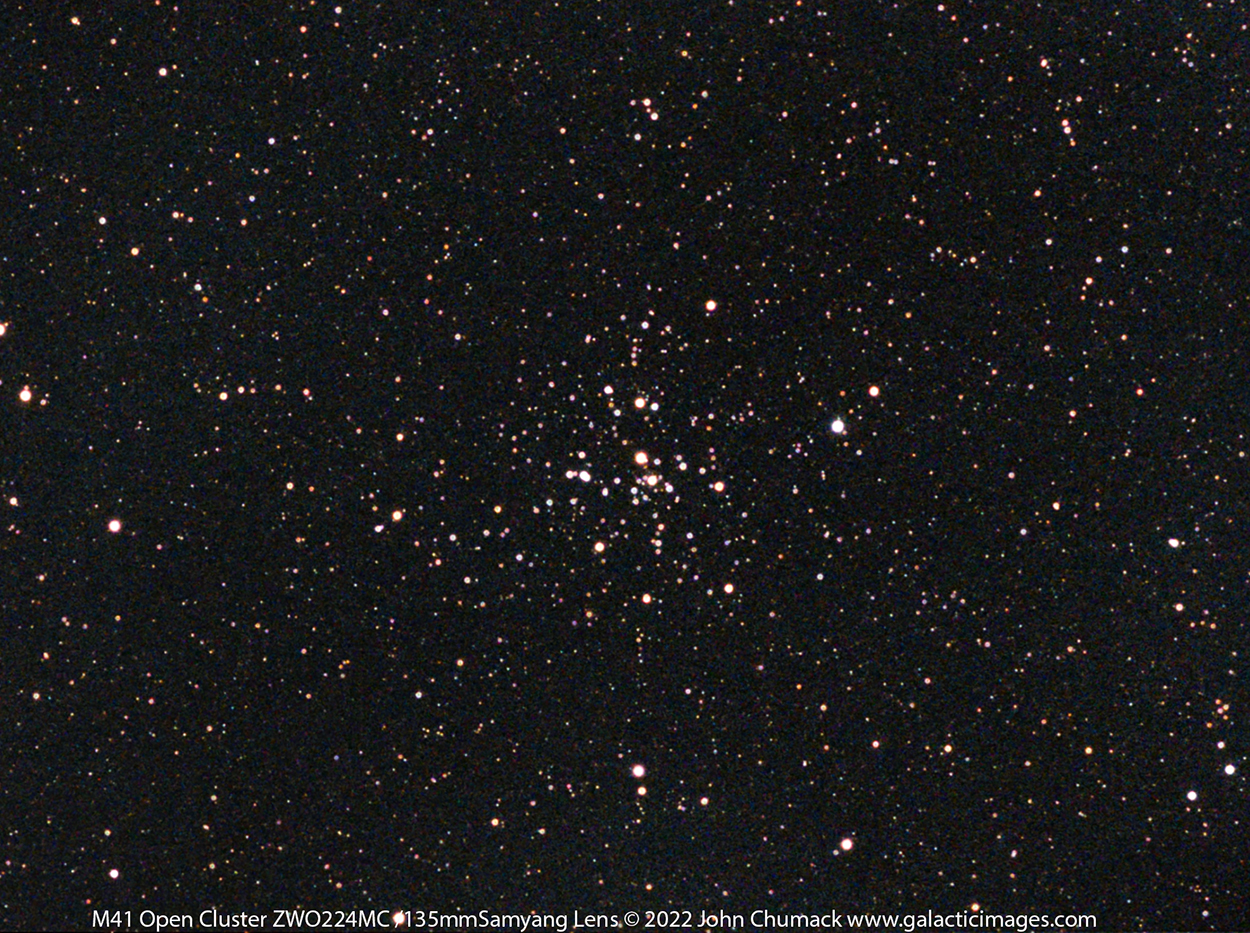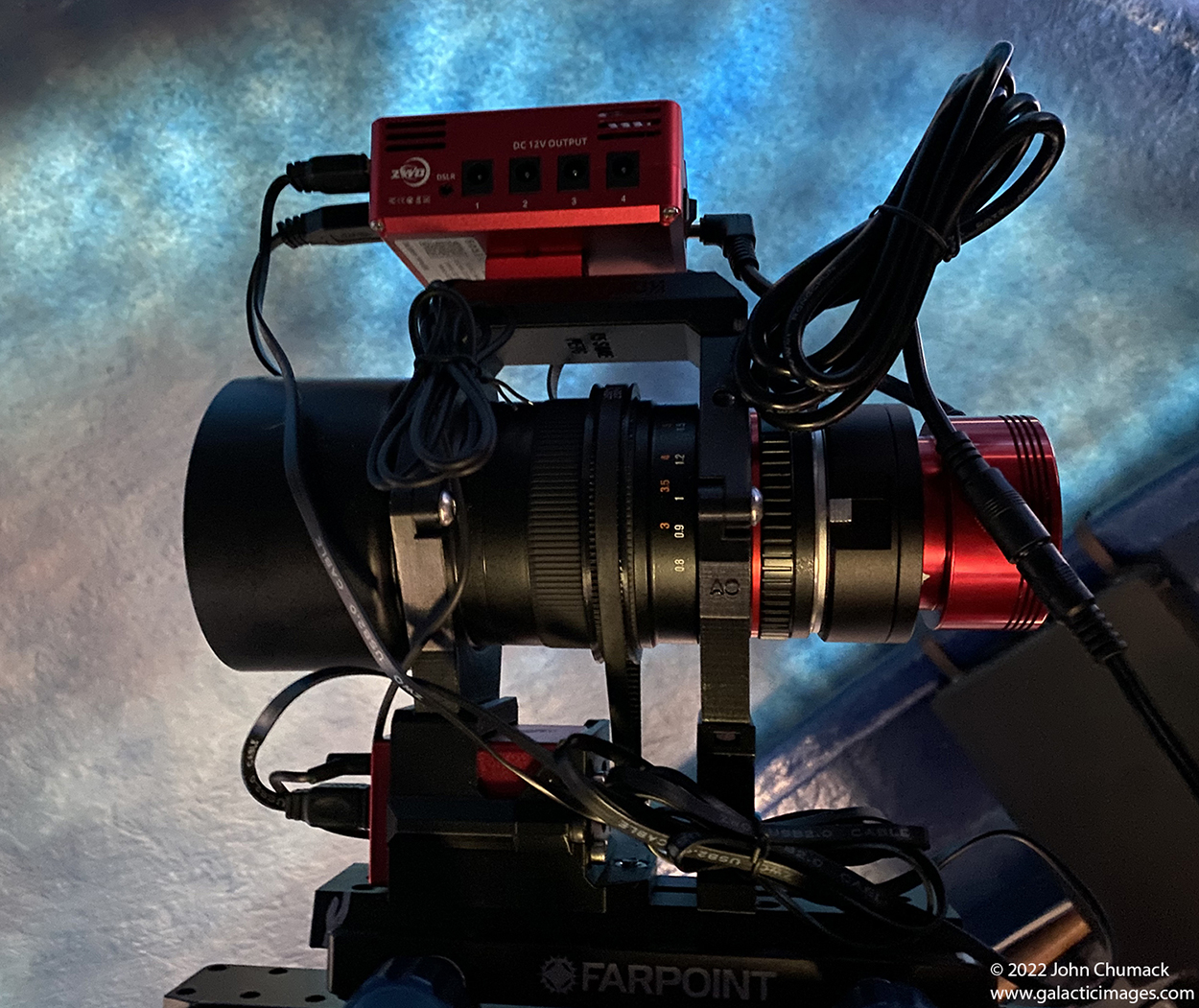I recently was asked if it was possible to capture One shot color(OSC) Deep Sky Objects with just a telephoto lens on a tracking mount/platform but still have the magnification effect of a telescopic view, or capture the DSO close-up without having an actual telescope or high cost huge Megapixel camera?
Will a low cost light weight planetary type Cmos camera work for DSO’s?
Well I dug through my inventory of various Cameras I own, one that is uncooled with the smallest physical chip size/and smallest pixels size that would narrow the FOV of the 135mm lens, and the smallest I had that met the criteria and was low cost, was the ZWO 224MC uncooled Color Cmos Camera(I usually used for Planetary Imaging).
M41 Open Star Cluster – Test with a small chip non DSO Uncooled camera. This is the full image uncropped.
Captured with a ASIAIR/Samyang 135mm Lens F2 lens, set to F4, Bisque MYT Mount, & Small uncooled Cmos chip ZWO 224 MC planetary camera.
30 x 1 minute sub exposures, stacked for a total of 30 minutes of integration time. I set the Camera Gain to 176, via ASI Air APP.
Automated Wifi Capture via ASI AIR Pro through the APP on my IPAD.
Full calibration with 20 Darks & 30 Flats in Deep Sky Stacker,
Nebulosity, Pixinsight, Adobe CS.
I used my L-Pro Filter with a ASI to EOS lens adapter during capture through the 135mm lens to knock down the city lights & strong nearly full moonlight. My backyard in Dayton, Ohio.
I wanted to see if i could capture some close-ups of DSO’s using just a small uncooled Cmos chip(2.1 micron pixels) camera attached to the small 135mm lens, yielding me roughly 2 degree x 1.5 degree FOV, at 5.74 arc sec per pixel. Similar or close to a typical telescopes FOV’s.
The nice thing is you can do subs exposures as short as 10 sec, 30 sec or 1 minute, (especially helpful if you have a portable rig, with less than perfect tracking or poor polar alignment) and then simply stack the images until you have at least 30 minutes of integration, take plenty of subs and properly calibrate with Darks and Flats. The noise from being an uncooled camera eventually cancels out or is manageable via post processing software.
It seems to do a really good job at these extreme magnification with this great Samyang lens/small chip combo, it provided a similar image scale to a telescope FOV, it worked well for the Brighter Deep sky objects, like Open Clusters or brighter Nebula.
With this Combo you will need to integrate for at least 30 minutes for Open Clusters and 60 to 120 minutes for bright nebula to get a decent & clean image while imaging in full moonlight or in the city.(bortle 8 skies)
YES, As you can see some objects can be captured with good results using low cost uncooled cameras & small telephoto lenses, thanks to stacking software and small chip cameras.
Warning: there is a serious learning curve to image processing, so it may take you a while to get good at it,
but once you start down that rabbit hole practice/experience makes things possible.
Best Regards,
John Chumack
www.galacticimages.com








